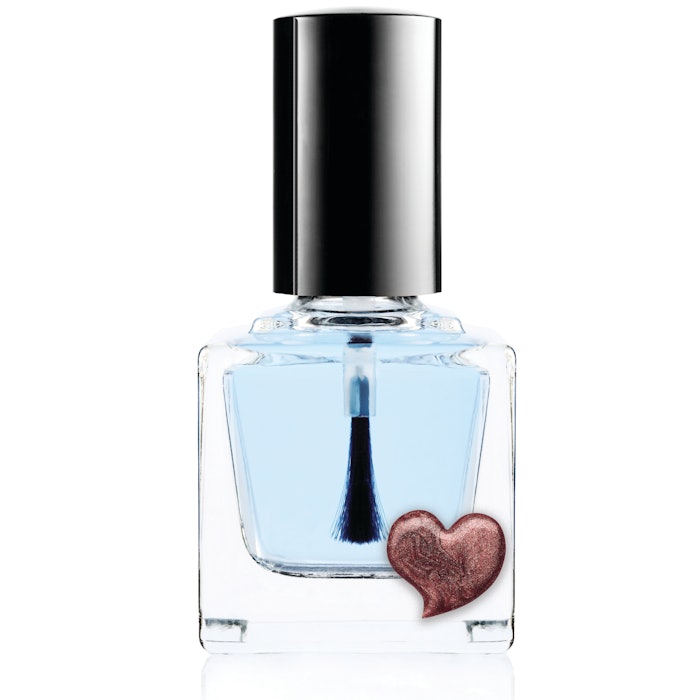
We have all been there: You are suddenly rushed for time. A client came late enough to her appointment to push you to your limits but not too late to require a reschedule. The domino effect begins: You know this appointment will bleed over into the next, which will inch into the next, which will topple over into the next, and so on and so forth. You are tempted to skip applying base coat; nobody sees it, after all. It should save you a solid two to five minutes or so, right? Should you neglect this step to catch up?
The short answer: No. The long answer: Read on.
Your Manicure’s Insurance
"Poor base coat; it is the coat nobody sees. I think that is the main reason it gets overlooked!" laughs Tamara Di Lullo, CND education ambassador and owner of Candy Nail Bar. "We get so caught up in colors, nail art and finishing with the perfect shine or texture, that the base gets lost in the equation. But, any professional nail tech would shudder at the thought of neglecting proper nail prep or using the correct base coat for their manicure!"
Morgan Haile and Taylor Daniel, co-owners of Morgan Taylor Lacquer, both agree, "Manicures are just like anything else in life; you must start with a good foundation."
Think of the nail like a canvas: Artists often prime their canvas for paint with a coat of gesso, which affords several benefits, including color binding and a smoother surface. Base coat acts in much the same way as gesso—it helps create a solid foundation to which polish can adhere while also addressing a host of specific needs.
"Base coat is a multifunctional manicure savior," claims Rita Remark, essie global lead educator. "Manufacturers specifically formulate it to do a number of nail-saving tasks that, in the end, prevent chips and protect and nourish clients’ natural nails."
That word "savior" might seem like hyperbole, but it is not. Base coat provides a form of manicure insurance that will not only enhance your results but also increase client satisfaction. "Correctly applying base coat ensures correct product adhesion, which in turn minimizes service breakdown from premature chipping or damage to the natural nail," says Di Lullo. Less chipping and peeling equals less time and lost money spent fixing issues.
Simply put: "You are going to get much better results if you take the extra time and spend the extra bit of money on a variety of base coats," says Doug Schoon, a scientific consultant to the beauty and cosmetics industry and president of Schoon Scientific.
Base Benefit No. 1: Adhesion
As mentioned above, base coat serves a major function of the overall manicure: It acts like double-sided sticky tape, effectively clinging to and locking down polish. "Traditional lacquers are not formulated to hold tightly to the natural nail without a base," says Remark. Color lacquer’s chemistry is to blame; polish is formulated to hold pigments together, and pigments—the colors we know and love—actually block adhesion and prevent polish from adhering well to the nail plate, Schoon explains. "Take out the pigments, and the adhesion becomes much better. That is why your base coat typically has no color," he says.
Additionally, base coats contain chemicals that love polishes—and vice versa. "Base coat dries a bit sticky, so it grips and adheres the color coat, preventing chips," says Remark. Need proof? Schoon suggests visualizing the dreaded manicure peel: When a manicure peels or chips, the color does not separate from the base coat and leave the base coat on the nail. "That is because the base coat and nail polish fuse together to become one piece that is inherently stronger," he says. The reality is, manicure components function like a chain—base coat, then polish, then top coat—and if you break the chain, the manicure will not be as strong. "The components simply will not work as well without one another," Schoon attests.
Base Benefit No. 2: Flexible Sealant
The base coat needs to be as flexible as our natural nails to protect and serve the manicure and nail plate. "Most base coats are made up of solvents like ethyl and butyl acetates and plasticizers, which allow the base coating to remain flexible and resist chipping of the polish coats adhered to them. This is important because you want a base layer that will bend with the natural nail and not break or chip," says Di Lullo.
Also, our nails naturally overflow with moisture, according to Schoon. "Because the moisture builds up over time, if you put polish over top of the nail without base coat, it is like putting your thumb over a slowly leaking hose—the pressure builds up until it squirts out. When the moisture gets to the surface where the nail polish is, it can actually push the polish off of the nail plate," he says. Luckily, base coat is formulated to act as a sealant on the nail plate, keeping moisture leakage from ever reaching the polish and causing lifting.
About the Author
Karie L. Frost is a freelance writer, copywriter and artist living in Glastonbury, Connecticut.











